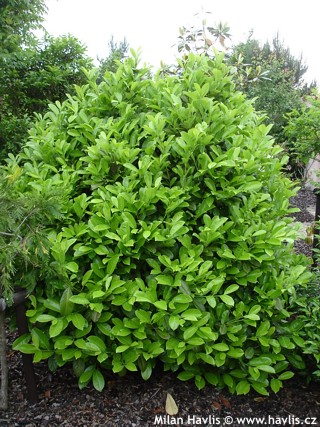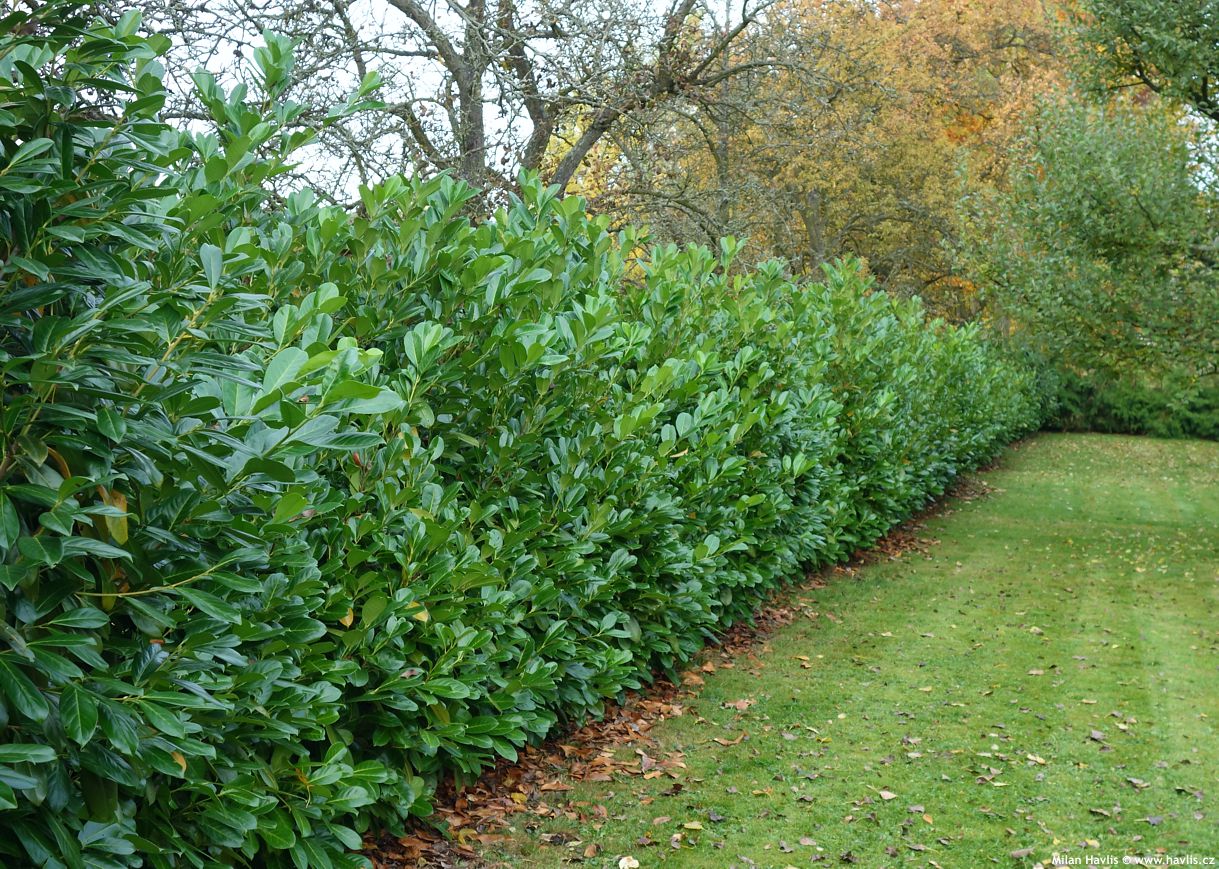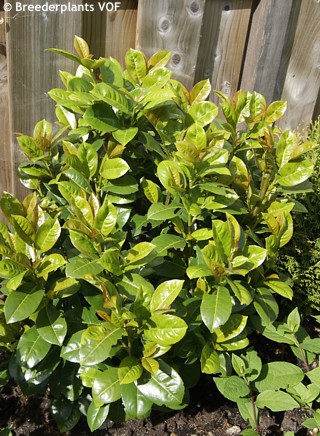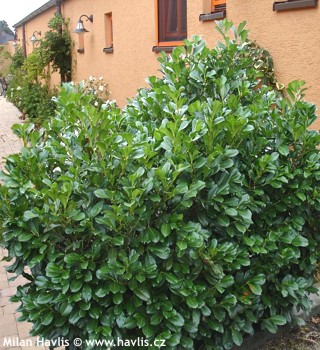Prunus laurocerasus 'ROTUNDIFOLIA' cherry laurel, common laurel, English laurel


Prunus
We are specialists in evergreen plants and offer the widest possible range of hardy, quality plants. English (cherry) laurel is probably the most common and reliable species.Cherry laurels have compound inflorescence made out of small, white, fragrant flowers that appear in April and May, followed by very ornamental but poisonous fruits. Rotundifolia does not flower too often. It is ideal for formal hedges or informal green walls. Pruning is possible in the spring after frost and/or in mid summer.
Laurels need slightly deep and fertile, acidic, well-drained but preferably moist soil, and extra watering in frost-free periods in winter to prevent from drying out before the ground gets frozen. It will thrive in full sun or part shade, and will also tolerate being grown in full shade. It may suffer from chlorosis (leaves turning yellow owing to lack of iron in the soil) but when it does use a special liquid soil pH balancer to keep it acidic which will help the plant absorb iron. It is not suitable for the coldest parts of Europe. Fully hardy to about -20°C (USDA zone 6b), or -24°C in perfect soil conditions. In deeper frosts it loses leaves and tips of the branches die back.
Last update 01-01-2010.
Goods are shipped all over Europe. For Russia and U.K. and for further details please read about SHIPPING OPTIONS HERE.
Are you interested in a serious discount for orders NOV-FEB? Check your options here.
THE PRICES INCLUDE VAT of 15%. For quick conversion you can use 1 CZK = approx. 0.04 EUR
- STANDARD QUALITY - Plants of this group are 1st class quality with number of branches and overall density adequate to their size and age, considering they were container grown.
- DE LUXE QUALITY - This label guarantees a luxurious quality of manually selected plants that, compared to their height and age, are exceptionally dense and beautiful.
- EXTRA - These plants are usually mature and bigger specimens with exceptional overall appearance.
- STANDARD (as described in the plant form) means a tree with a trunk of 190-210 cm and a crown at the top, unless specified differently. The commercial size for trees is their girth measured in the height of 1m from ground.
- HOBBY - These plants are of the same quality as our standard-quality plants but younger and therefore cheaper.
- SHRUB - a woody plant with branches growing bushy from the ground level.
- HALF-STANDARD or MINI-STANDARD - a small tree with shorter trunk, its size is usually specified.
- FEATHERED - These are trees with branches growing already from the base of the trunk and up along the stem.
- GRASSES and PERENNIALS - Sizes given usually read the diameter of the pot or the clump, as specified.


















